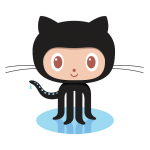Sponsor: Do you build complex software systems? See how NServiceBus makes it easier to design, build, and manage software systems that use message queues to achieve loose coupling. Get started for free.
 I was recently looking for a simple in-memory caching library that sat on top of ConcurrentDictionary. I didn’t have many requirements other than it needing to be thread safe and and had some expiry policy built-in. I’ve used .NET MemoryCache before, but figured there likely had to be something simple else already built.
My search led me to Foundatio:
I was recently looking for a simple in-memory caching library that sat on top of ConcurrentDictionary. I didn’t have many requirements other than it needing to be thread safe and and had some expiry policy built-in. I’ve used .NET MemoryCache before, but figured there likely had to be something simple else already built.
My search led me to Foundatio:
Pluggable foundation blocks for building distributed apps.Turns out Foundatio was created for building Exceptionless. I’ve blogged about Exceptionless before, which is a real-time error and logging .NET and Javascript.
Basics
Caching in it’s various forms (in-memory, distributed) is simply about storing a copy of the data in a way that improves performance. This could be data from a web service, database, or any other call that involves reading data that rarely changes but is read/queried often.Foundatio
First thing will be to get the latest NuGet package.PM> Install-Package FoundatioThere are many other components that Foundatio provides besides Caching, such as: Queues, Locks, Messaging, Jobs, File Storage, Metrics and Logging. I haven’t dug into any of these other areas yet, but once I do, you can expect a blog post.
In-Memory Caching Demo
As with most of my posts, all the following code is available as a demo application on GitHub. This demo console app is going to show currency exchange rate between USD and CAD for a given day. Since historical exchange rates don’t change, there is no point in making an HTTP call for a day that was already queried. Also, one really cool feature I’ll show, is that you can set the max number of items in your cache. So for this demo, I’m only going to keep the last 3 exchange rates by date in cache. First we can start off by creating a new instance of an InMemoryCacheClient and setting it’s MaxItems property to 3. Next, I want to create a method that is going to query for the exchange rate, but before it does, I want to check the cache to see if it exists. The key for our cached object is going to be the date. If the key does not exist in the cache, then we will make our HTTP call, get the results and cache it. Now to write this all up, I’m going to take a date as input from the console application and have it invoke our GetCurrencyRate(DateTime).Result
Now when we run our application, we can see that if we request the same date, within the last 3 requests, we will hit the cache instead making our HTTP call.
- Requested 2016-01-01, 2016-01-02, 2016-01-03, all of which were fetched from HTTP service.
- Requested 2016-01-01 again, which was pulled from cache.
- Requested a new date 2016-01-04 which was fetched from the HTTP service.
- Requested 2016-01-02 again, however since it is no longer the last 3 requested (2016-01-03, 2016-01-01, 2016-01-04) it has to fetch from the HTTP service.
More
There are other interesting CacheClient’s such as a hybrid Redis + InMemory cache client that I’m looking forward to exploring in Foundatio. Let me know if you have any comments related to Foundatio or other caching libraries in comments or on twitter.Source Code
 The source code for this demo is available on GitHub.
The source code for this demo is available on GitHub.